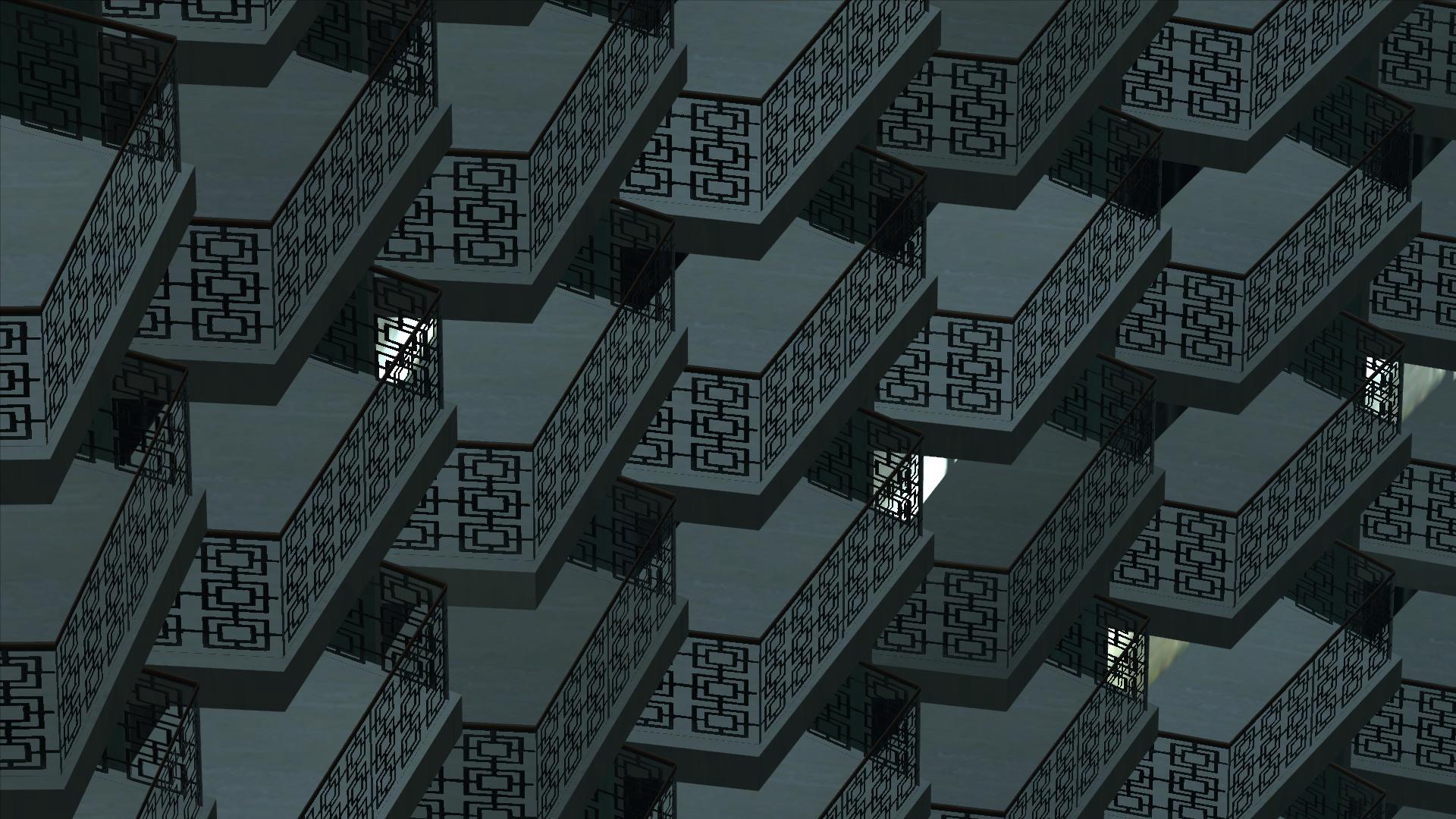Maxim Shibaev
From the Virtual to the Real
One often meets with a perception of video games as frivolous, potentially even harmful forms of entertainment.
Whether video games can constitute a separate creative medium or function as tools of social criticism are questions that have only recently begun to be raised. Over the last decades, a separate academic field studying video games has begun to take shape at the intersection of different disciplines in Russia—game studies.
This issue of V-A-C Sreda online magazine publishes a text by Maxim Shibaev, a researcher of video games and gaming aesthetics. Shibaev’s text covers the history of game studies in Russia and provides an overview of the main approaches to the study of game reality: from virtual photography, to cinematic clips, to television series.
Introduction
“Games appeared far earlier than human culture”—this was the thesis of the Dutch philosopher Johan Huizinga, and one of the main ideas of his work Homo Ludens. Play—and here we have to do not just with ancient board games, such as dice or cards, but with the playful nature of rituals, feasts, sacred dances, even sports—has always been an important part of culture. Published in 1938, decades before the appearance of the first video games, Huizinga’s work played an important role in the perception of games as a basis of communication, rather than just as cultural phenomena or sources of entertainment.
Are video games a separate medium? In Russian society, this question remains unresolved. For over ten years now, while the media demonises gamers and encourages moral panic and parents ascribe problems in their relationships with their children to gaming addictions, Russian university departments have sought to reflect on this relatively new phenomenon for the country—the study of video games, or game studies. The first laboratory for the study of computer games (LIKI) appeared in 2012, headed by professor Konstantin Shevtsov. After this, the game community gradually began to consider gaming not just as a source of entertainment, but as a wide-ranging, little-studiedacademic field. Despite the fact that game studies had begun to appear across the rest of the world 12–13 years earlier, this was an important turning-point in Russian science and culture, if one that was not immediately noticed by important cultural institutions.
In the study of new phenomena, the choice of optics is important. In the case of game studies, there are two possible approaches. On the one hand, there is game design, that is, the development of games. The game designer profession encompasses a variety of specialisations, which can differ from one another even in the context of a single task. The thinking up of a game scenario involves the development not just of an overall plot, but of secondary quests, as well as the writing of dialogues, and so on. Games divert us, distract us from reality, and deeply immerse us in their stories through their interactivity. This variety of genres allows the gaming industry to capture a wide audience that ranges from lovers of “cosy games” with aesthetics that create a feeling of cosiness and comfort to fans of the dark fantasy philosophy of the works of the Japanese developer Hidetaka Miyazaki.
On the other hand, games can be approached as sets of meanings. Whether they find themselves on the Tetris vector board or the mythological Slavic setting of Black Book, the opinion and experience of each player is unique. Deep meaning can be found even in simple games where the aim is simply to increase income. An unending series of a ccumulations can be seen as a reflection of the values of capitalist society. More complex games make their worlds more alive and discursive through various references and devices, moral choices, and internal economics. The protagonist of the game Disco Elysium is a detective who finds himself in a drawn-out crisis: the gameplay structures itself around dialogue with the detective’s inner “personalities,” recalling the story of Bill Milligan. The problems of dystopian society are revealed by characteristic phenomena—personification, social stratification, critique of capitalism, and alcoholism. In the context of the complex structure of gaming universes, it is also interesting to note the MMORPG phenomenon: virtual online worlds in which game tasks closely align with economic and political factors (EVE Online, World of Warcraft, Allods Online).
The semantic levels of games allow for a variability of interpretation, which means game designers at some point “dissolve” into their products. In this respect, the French philosopher Roland Barthes’s concept of the “death of the author” is well-suited to game narratives. The Norwegian researcher Christian Byorko has conducted a study in which he analysed the reading of the plot of The Elder Scrolls V: Skyrim (Bethsheda Game Studios, 2011) by white nationalists. Byorko came to the conclusion that in the fantasy world of Skyrim, populated by different races, people with a particular world view saw an opportunity to manifest racist beliefs. With a change of individual perspective, the storyline of saving the world from an invasion of dragons took on completely different connotations. For similar reasons, in many games, as in Skyrim, child-characters cannot be harmed, to avoid ethical conflicts.
Learning Mode
The development and popularisation of computer technologies made digitalisation a universal phenomenon, and one that began to attract public attention. In 2001, the first issue of Game Studies—a web journal dedicated to the study of video games—was published in Copenhagen, marking an important point in the perception of the game medium and considered by many to have marked the birth of the game studies discipline.
In Russia, growth in popularity became apparent at the beginning of the twenty-first century. As well as the previously mentioned Saint Petersburg LIKI, a group of graduate students at the Philosophy Faculty of Moscow State University began to work with video games. In 2013, these graduate students launched the “Contemporary media theory and metaphysics of video games” optional module. In 2014, they teamed up with religious scholars, culturologists, lawyers, and philologists to create the Moscow Centre for the Study of Video Games. A year later, the Logos journal dedicated an issue to game studies, and in doing so provided this new discipline with its first major recognition in Russia.
The decade from 2010 to 2020 was a turning point in the perception of video games. Games gradually entered the informational space of Russians not just through mass media, but through childrens’ hobbies —computers and tablets became practically mandatory devices, indispensable as much for education as for entertainment. Meanwhile, in the global community, major corporations began to sponsor cyber-sport events, museums to include video games in their collections, and curators to consider virtual spaces as sources of inspiration.
In this period, the gaming trend also began to catch on in education: Russian universities opened game design departments (HSE University, Moscow Polytech, Tymuen State Institute of Culture, Saint Petersburg State University of Industrial Technologies and Design) and young academics were given the opportunity to run their own courses in humanitarian departments (HSE University, Lomonosov Moscow State University, RUDN University, Tomsk State University). Thematic conferences (“Video Games: Research, Criticism, Design” in 2017 at Moscow State University; “Care and Video Games” in 2021 at HSE University; “The Aesthetics of Good and Evil in Video Games” in 2020 at HSE University), seminars (“Game / Play: Studies, Criticism, Design” from 2021—2022 at HSE University), and courses on online-platforms (Skillbox, XYZ, GeekBrains) have appeared at Russian universities, as have a range of specialists and amateurs who participate in the formation of this new discipline. An important role in this was played by the pandemic: along with educational courses, people began to spend more time gaming and using online video platforms.
Press START
The aim of game developers is to create an immersive space that involves the player in the story at all of its levels. This makes game design somewhat similar to architecture: every element has a decorative, functional, or semantic significance.
Immersing themselves in the story, players fall under the influence of a variety of elements—surroundings, music, dialogue, individual stories, stylistics. Such a combination of mediums recalls the concept of Gesamtkunstwerk—“total artwork” or “synthesis of the arts”— at the centre of which lies the idea of the creation of works through the intermingling of different genres and artistic disciplines. Making something out of nothing, game narrative and design embody this principle—an interactive space is created from a sequence of naughts and ones. Three-dimensional models replace sculpture, digital graphics fill game worlds with images, sounds lend emotional substance and atmosphere.
As well as through interactivity and gameplay, narrative can be formed through meaning, discussion of complex and actual problems in contemporary society. “Seriousness” is part of the plot of most games—after all, if a developer wants to keep the gamer’s attention, there must be something in the narrative. This is how well thought-through stories and living characters—stories and characters that force gamers to empathise with what they see—appear.
In many projects, genre is of secondary importance, due to a variety of approaches to design and borrowing from many gaming mechanics.This is all the more true given the importance for designers that the game they create be unique, and their need to step out of generic conventions in order to achieve this.
This is also how art-house and indie games appear—less commercially-orientated games aimed at a narrower public—players usually learn about them through gaming communities. The popular genre of interactive film has no strict definition and exists on the boundary of video games and film. The Infectious Madness of Doctor Dekker(D’Avkerri Studios Limited, 2017), in which the player takes on the role of a psychotherapist and solves a murder, is an example of such a combination. Balanced between reality and horror, the stories of the patients create a sense of intimacy, and the player finds themselves drawn into the story as they build relationships with its characters.
Another feature of art-house games is experimentation and message. The creator of Everything (David OReilly, 2017), for example, describes his idea as being based on Eastern philosophy and stoicism, and the essence of his gameplay to be a reflection on self-identification, the unity of man and nature.

The difficulty of defining genre is also partly related to the importance of a game’s setting (surroundings, circumstances) and the role it plays in its perception. This includes spatial characteristics and the set of rules around which gameplay is organised—the Middle Ages with knights, castles, and feudal relationships; anti-utopia and cyber-punk; the Christmas holidays; an office building environment. Each of these variants offers a unique mode of interaction and experience that does not allow for the formation of an opinion of a game based solely on its generic designation.
Press PRINT SCREEN
The use of games as an artistic method is a way of studying visual aesthetics and making sense of reality, including digital reality. Virtual or gaming photography captures surroundings with the help of a photo-mode which can be set up or added to a game by third party developers. A community of professionals and amateurs has gathered around this phenomenon—they share their works and set up competitions on forums and other internet-spaces. Another interesting phenomenon has developed in parallel with gaming photography—gaming tourism. Here the study of space is similar to touristic travel, with events fixed through screenshots. As the British researcher Tim Gale writes “objects of the tourist gaze are, sometimes painstakingly, re-created in virtual worlds, from palm-fringed sandy beaches to ancient monuments such as the Great Pyramids and Stonehenge, as are familiar attractions and amenities (e.g. casinos, funfairs, racetracks and miniature golf courses).”
An interactive tour mode was added to the final games in the Assassin’s Creed (Ubisoft) series, in which the story of each game is based in a particular historical epoch. Using this mode, players could safely explore the game space and take part in pre-designed excursions around the game world’s landmarks.
Anthropological and ethnographic approaches can also be applied to the study of game worlds. A striking example is the photographer Yulia Kosobryukhova’s project Playing Russian Reality, which seeks to make sense of Russian identity. Familiar images can be immediately snatched out from the characteristic aesthetic of the game: an old fence in the Russian outback, a bus stop knocked together from boards, a VAZ-2109 on a roadside in a dark forest. Through stylisation and post-processing, screenshots are made to like real photographs in the pictorial genre—they look as though they have been drawn in charcoal, with soft lines and unclear details. Kosobryukhova’s methods can be compared to those of the pictorial photographers Sergey Savrasov, Yuri Eremin, and Lyudmila Tabolina—photographers who, in their time, brought what was then a new genre closer to painting. Today, game shots are compared to their work.
The visuality of games of the 2000s is characterised by the particularities of early three-dimensional graphics and polygon meshes, which significantly simplified the forms of objects. The Minimalism in GTA community is built around this aesthetic —unity of colour, shape, and texture are the main subjects of the works of community members.






Gaming photography has begun to interest real venues. The communicative methods and aesthetics of video games were the main theme of the A Palette of Pixels exhibition—a retrospective on the development of gaming stylistics from minimalist, limited technologies to modern tools.
The exhibition Videogames: Design/Play/Disrupt, held at the Victoria and Albert Museum in 2018-2019, approached video games as a medium in their own right, paying attention to the phenomenon of fan art, authorship, and artistry.
Virtual World Through the Eyes of a Photographer, a 2020 Russian online exhibition curated by Irina Shedko, presented extraordinary screenshots in the style of glitch art and photorealism.
Another way of making sense of video games is provided by machinima—video recording based on game engines. Konstantin Remizov has written more about this term—a combination of the words animation, cinema, and machine—for V–A–C. The machinima artistic practice takes a cinematic approach to virtual worlds, adding mood, tone, and imagery to visuals. After processing, the video sequence is transformed through editing, sound tracks, and titles. As with film, works of machinima vary in their genre, content, and audience. Machinima is used by media artists (Benjamin Bardou, Tizzy Canucci), in the creation of series, films, and their localisations (Freeman’s Mind, 2007; Los Angeles Psycho), and in amateur videos for specific audiences. For example, the “Too Poor” music video in theAllods Online (Nival, 2010) game.
EXIT GAME
The Russian researcher Yaroslava Ismukova writes that “despite the intense attention given to video games, game studies remains a chaotic and easily criticised field of knowledge that lacks a specific categorical apparatus and a uncontested, specific definition of what constitutes a computer game.” This is partly true: as is the case with many humanities, the research of video gamese—or game studies— faces difficulties in its perception and respect from science, society, even from its key audience—gamers. The interdisciplinary character of game studies and the wide range of possible game content mean a uniform approach to research is not possible, and make ambiguity something that will have to be reckoned with by anyone entering this field.
All the same, the audiovisual potential and semantic possibilities of video games is being recognised by an increasing number of cultural institutions. In 2021, as part of the exhibition When Gondola Enginges Were Taken to Bits, the artist Elina Gennadievna held her Esc performance on the VRChat platform (VRChat, 2017). Reflecting on collective flight and escapism, Gennadievna created a performative practice in which participants were invited to immerse themselves in a virtual version of the exhibition using two modern computers.
In the same year, as part the GARAGE museum’s exhibition Assuming Distance: Speculations, Fakes, and Predictions in the Age of the Coronacene, a special “gamified” environment was built in which participants existed and moved as though in the game-playing field. In 2022, as part of the Art for the Future Biennale, the entire lower floor of the Multimedia Art Museum Moscow (MAMM) was given over to video games. The audience had the opportunity not just to watch the video installations, but also to have a go at the exhibits themselves on one of the freely available computers with games.
I would like to conclude with the words of Anna Kozlova, curator of the Game Junction exhibition at the Khodynka Gallery in 2021—“Video games have a multi-component performativity and complex immersiveness that allows participants to share authorship with developers and artists. Through this freedom of action, every new entry and immersion into the digital space provides an opportunity to rediscover new frontiers of knowledge and feeling in the game universe.” It is precisely in this way that game studies functions—through a regular rediscovering of its own frontiers. Notwithstanding fervent criticism and internal contradictions, video games are confidently entering the sphere of a new, changing perception of art that is taking hold not just all over the world, but, gradually, in Russia as well.
Translated by Charlotte Neve
sreda@v-a-c.org
All rights reserved. Reproducing or using the materials from this web-page without written consent of the rightsholder is forbidden.